Setting the Stage: The Late Pleistocene Colonization of North America
Abstract
:1. Introduction
2. The Clovis Techno-Complex
3. Earlier Techno-Complexes
Can We Find Clovis Progenitors?
4. The Elusive Origins of Fluting
5. The Spread of Clovis
6. Conclusions
Funding
Acknowledgments
Conflicts of Interest
References
- Stanford, D.; Bradley, B. Across Atlantic Ice: The Origin of America’s Clovis Culture; University of California Press: Berkeley, CA, USA, 2012. [Google Scholar]
- Blong, J.C. Late-glacial hunter–gatherers in the Central Alaska Range and the role of upland ecosystems in the peopling of Alaska. PaleoAmerica 2018, 4, 103–133. [Google Scholar] [CrossRef]
- Goebel, T.; Waters, M.R.; O’Rourke, D.H. The Late Pleistocene dispersal of modern humans in the Americas. Science 2008, 319, 1497–1502. [Google Scholar] [CrossRef] [PubMed]
- Hoffecker, J.F.; Elias, S.A.; O’Rourke, D.H.; Scott, G.R.; Bigelow, N.H. Beringia and the global dispersal of modern humans. Evol. Anthropol. 2016, 25, 64–78. [Google Scholar] [CrossRef] [PubMed]
- Kemp, B.M.; Schurr, T.G. Ancient and modern genetic variation in the Americas. In Human Variation in the Americas; Auerbach, B.M., Ed.; Southern Illinois University Press: Carbondale, IL, USA, 2010; pp. 12–50. [Google Scholar]
- Llamas, B.; Fehren-Schmitz, L.; Valverde, G.; Soubrier, J.; Mallick, S.; Rohland, N.; Nordenfelt, S.; Valdiosera, C.; Richards, S.M.; Rohrlach, A.; et al. Ancient mitochondrial DNA provides high resolution time scale of the peopling of the Americas. Sci. Adv. 2016, 2, e1501385. [Google Scholar] [CrossRef] [PubMed]
- Moreno-Mayar, J.V.; Vinner, L.; de Barros Damgaard, P.; de la Fuente, C.; Chan, J.; Spence, J.P.; Allentoft, M.E.; Vimala, T.; Racimo, F.; Pinotti, T.; et al. Early human dispersals within the Americas. Science 2018, 362. [Google Scholar] [CrossRef] [PubMed]
- Morrow, J.E. Review of “Across Atlantic Ice: The Origin of America’s Clovis Culture”, by Stanford, D.J., Bradley, B.A. Lithic Technol. 2014, 39, 76–78. [Google Scholar] [CrossRef]
- O’Rourke, D.H.; Raff, J.A. The human genetic history of the Americas: The final frontier. Curr. Biol. 2010, 20, R202–R207. [Google Scholar] [CrossRef]
- Posth, C.; Nakatsuka, N.; Lazaridis, I.; Skoglund, P.; Mallick, S.; Lamnidis, T.C.; Rohland, N.; Nägele, K.; Adamski, N.; Bertolini, E.; et al. Reconstructing the deep population history of Central and South America. Cell 2018, 175, 1185–1197. [Google Scholar] [CrossRef]
- Raff, J.; Bolnick, D.A. Does mitochondrial haplogroup X indicate ancient trans-Atlantic migration to the Americas? A critical reevaluation. PaleoAmerica 2015, 4, 297–304. [Google Scholar] [CrossRef]
- Raff, J.A.; Bolnick, D.A.; Tackney, J.; O’Rourke, D.H. Ancient DNA perspectives on American colonization and population history. Am. J. Phys. Anthropol. 2010, 146, 503–514. [Google Scholar] [CrossRef]
- Raghavan, M.; Skoglund, P.; Graf, K.E.; Metspalu, M.; Albrechtsen, A.; Moltke, I.; Rasmussen, S.; Stafford, T.W., Jr.; Orlando, L.; Metspalu, E.; et al. Upper Palaeolithic Siberian genome reveals dual ancestry of Native Americans. Nature 2013, 505, 87–91. [Google Scholar] [CrossRef] [PubMed] [Green Version]
- Raghavan, M.; Steinrücken, M.; Harris, K.; Schiffels, S.; Rasmussen, S.; DeGiorgio, M.; Albrechtsen, A.; Valdiosera, C.; Ávila-Arcos, M.C.; Malaspinas, A.-S.; et al. Genomic evidence for the Pleistocene and Recent population history of Native Americans. Science 2015, 349, 841. [Google Scholar] [CrossRef] [PubMed]
- Rasmussen, M.; Anzick, S.L.; Waters, M.R.; Skoglund, P.; DeGiorgio, M.; Stafford, T.W., Jr.; Rasmussen, S.; Moltke, I.; Albrechtsen, A.; Doyle, S.M.; et al. The genome of a late Pleistocene human from a Clovis burial site in western Montana. Nature 2014, 506, 225–229. [Google Scholar] [CrossRef] [PubMed]
- Waters, M.R.; Stafford, T.W., Jr. Redefining the age of Clovis: Implications for the peopling of the Americas. Science 2007, 315, 1122–1126. [Google Scholar] [CrossRef] [PubMed]
- Braje, T.J.; Dillehay, T.D.; Erlandson, J.M.; Klein, R.G.; Rick, T.C. Finding the first Americans. Science 2017, 358, 592–594. [Google Scholar] [CrossRef]
- Erlandson, J.M.; Graham, M.H.; Bourque, B.J.; Corbett, D.; Estes, J.A.; Steneck, R.S. The kelp highway hypothesis: Marine ecology, the coastal migration theory, and the peopling of the Americas. J. Island Coast. Archaeol. 2007, 2, 161–174. [Google Scholar] [CrossRef]
- Fladmark, K.R. Routes: Alternate migration corridors for early man in North America. Am. Antiq. 1979, 44, 55–69. [Google Scholar] [CrossRef]
- Gilbert, M.T.P.; Jenkins, D.L.; Götherstrom, A.; Naveran, N.; Sanchez, J.J.; Hofreiter, M.; Thomsen, P.F.; Binladen, J.; Higham, T.F.G.; Yohe, R.M.; et al. DNA from pre-Clovis human coprolites in Oregon, North America. Science 2008, 320, 786–789. [Google Scholar] [CrossRef]
- Freeman, A. Why the ice-free corridor is still relevant to the peopling of the New World. In Stones, Bones, and Profiles; Kornfeld, M., Huckell, B.B., Eds.; University Press of Colorado: Boulder, CO, USA, 2016; pp. 51–74. [Google Scholar]
- Ives, J.W.; Froese, D.; Supernant, K.; Yanicki, J. Vectors, vestiges, and valhallas: Rethinking the corridor. In Paleoamerican Odyssey; Graf, K.E., Ketron, C.V., Waters, M.R., Eds.; Center for the Study of the First Americans, Texas A&M University: College Station, TX, USA, 2014; pp. 149–169. [Google Scholar]
- Pederson, M.W.; Ruter, A.; Schweger, C.; Friebe, H.; Staff, R.A.; Kjeldsen, K.K.; Mendoza, M.L.Z.; Beaudoin, A.B.; Zutter, C.; Larsen, N.K.; et al. Postglacial viability and colonization in North America’s Ice-Free Corridor. Nature 2016, 537, 45–49. [Google Scholar] [CrossRef]
- Potter, B.A.; Baichtal, J.F.; Beaudoin, A.B.; Fehren-Schmitz, L.; Haynes, C.V.; Holliday, V.T.; Holmes, C.E.; Ives, J.W.; Kelly, R.; Llamas, B.; et al. Current evidence allows multiple models for the peopling of the Americas. Sci. Adv. 2018, 4, eaat5473. [Google Scholar] [CrossRef]
- Potter, B.A.; Reuther, J.D.; Holliday, V.T.; Holmes, C.E.; Miller, D.S.; Schmuck, N. Early colonization of Beringia and northern North America: Chronology, routes, and adaptive strategies. Quat. Int. 2017, 444, 36–55. [Google Scholar] [CrossRef]
- Bradley, B.A.; Collins, M.B.; Hemmings, A. Clovis Technology; Archaeological Series 17; International Monographs in Prehistory: Ann Arbor, MI, USA, 2010. [Google Scholar]
- Buchanan, B.; Chao, A.; Chiu, C.H.; Colwell, R.K.; O’Brien, M.J.; Werner, A.; Eren, M.I. Environment-induced changes in selective constraints on social learning during the peopling of the Americas. Sci. Rep. 2017, 7, 44431. [Google Scholar] [CrossRef] [PubMed] [Green Version]
- Gingerich, J.A.M. (Ed.) In the Eastern Fluted Point Tradition; University of Utah Press: Salt Lake City, UT, USA, 2013. [Google Scholar]
- Gingerich, J.A.M. (Ed.) In the Eastern Fluted Point Tradition; University of Utah Press: Salt Lake City, UT, USA, 2018; Volume 2. [Google Scholar]
- Graf, K.E.; Ketron, C.V.; Waters, M.R. (Eds.) Paleoamerican Odyssey; Center for the Study of the First Americans, Texas A&M University: College Station, TX, USA, 2014. [Google Scholar]
- Haynes, G. The Early Settlement of North America: The Clovis Era; Cambridge University Press: Cambridge, UK, 2002. [Google Scholar]
- Meltzer, D.J. Peopling of North America. In The Quaternary Period in the United States; Gillespie, A., Porter, S.C., Atwater, B., Eds.; Elsevier: New York, NY, USA, 2004; pp. 539–563. [Google Scholar]
- Meltzer, D.J. First Peoples in a New World: Colonizing Ice Age America; University of California Press: Berkeley, CA, USA, 2009. [Google Scholar]
- Meltzer, D.J. Pleistocene overkill and North American mammalian extinctions. Ann. Rev. Anthropol. 2015, 44, 33–53. [Google Scholar] [CrossRef]
- Smallwood, A.M.; Jennings, T. (Eds.) Clovis: On the Edge of a New Understanding; Texas A&M University Press: College Station, TX, USA, 2015. [Google Scholar]
- O’Brien, M.J.; Lyman, R.L.; Buchanan, B.; Collard, M. A review of late Pleistocene North American bone and ivory tools. In Osseous Projectile Weaponry; Langley, M.C., Ed.; Springer: Dordrecht, The Netherlands, 2016; pp. 221–235. [Google Scholar]
- Bradley, B.A. Paleo-Indian flaked stone technology in the North American High Plains. In From Kostenki to Clovis: Upper Paleolithic–Paleo-Indian Adaptations; Sofer, O., Praslov, N.D., Eds.; Plenum: New York, NY, USA, 1993; pp. 251–262. [Google Scholar]
- Morrow, J.E. Fluted point manufacture: A perspective from the Ready Lincoln Hills site, 11JY46, Jersey County, Illinois. Midcont. J. Archaeol. 1995, 20, 167–191. [Google Scholar]
- Sholts, S.B.; Stanford, D.J.; Flores, L.M.; Wärmländer, S.K.T.S. Flake scar patterns of Clovis points analyzed with a new digital morphometrics approach: Evidence for direct transmission of technological knowledge across early North America. J. Archaeol. Sci. 2012, 39, 3018–3026. [Google Scholar] [CrossRef]
- Wormington, H.M. Ancient Man in North America; Denver Museum of Natural History Popular Series, no. 4; Denver Museum of Natural History: Denver, CO, USA, 1957. [Google Scholar]
- Eren, M.I.; Buchanan, B. Clovis technology. In eLS; John Wiley & Sons Ltd: Chichester, UK, 2016; pp. 1–9. [Google Scholar] [CrossRef]
- Werner, A.; Kramer, A.; Reedy, C.; Bebber, M.R.; Pargeter, J.; Eren, M.I. Experimental assessment of proximal-lateral edge grinding on haft damage using replicated Late Pleistocene (Clovis) stone projectile points. Archaeol. Anthropol. Sci. 2018. [Google Scholar] [CrossRef]
- Cook, H.J. Glacial age man in New Mexico. Sci. Am. 1928, 139, 38–40. [Google Scholar] [CrossRef]
- Renaud, E.B. Prehistoric flaked points from Colorado and neighboring districts. Proc. Colo. Mus. Nat. Hist. 1931, 10, 6–17. [Google Scholar]
- Roberts, F.H.H. A Folsom Complex; Preliminary Report on Investigations at the Lindenmeier Site in Northern Colorado; Smithsonian Miscellaneous Collections 94; Smithsonian Institution: Washington, DC, USA, 1935. [Google Scholar]
- Story, B.A.; Eren, M.I.; Thomas, K.; Buchanan, B.; Meltzer, D.J. Why are Clovis fluted points more resilient than non-fluted lanceolate points? A quantitative assessment of breakage patterns between experimental models. Archaeometry 2018. [Google Scholar] [CrossRef]
- Thomas, K.A.; Story, B.A.; Eren, M.I.; Buchanan, B.; Andrews, B.N.; O’Brien, M.J.; Meltzer, D.J. Explaining the origin of fluting in North American Pleistocene weaponry. J. Archaeol. Sci. 2017, 81, 23–30. [Google Scholar] [CrossRef]
- Hutchings, W.K. Finding the Paleoindian spearthrower: Quantitative evidence for mechanically-assisted propulsion of lithic armatures during the North American Paleoindian period. J. Archaeol. Sci. 2015, 55, 34–41. [Google Scholar] [CrossRef]
- Lyman, R.L.; O’Brien, M.J.; Hayes, V. A mechanical and functional study of bone rods from the Richey–Roberts Clovis cache, Washington, U.S.A. J. Archaeol. Sci. 1998, 25, 887–906. [Google Scholar] [CrossRef]
- Cotter, J.L. The occurrence of flints and extinct animals in pluvial deposits near Clovis, New Mexico: Part IV, report on excavation at the gravel pit, 1936. Proc. Acad. Nat. Sci. Phila. 1937, 89, 1–16. [Google Scholar]
- Cotter, J.L. The occurrence of flints and extinct animals in pluvial deposits near Clovis, New Mexico: Part VI, report on field season of 1937. Proc. Acad. Nat. Sci. Phila. 1938, 90, 113–117. [Google Scholar]
- Figgins, J.D. The antiquity of man in America. Nat. Hist. 1927, 27, 229–239. [Google Scholar]
- Hinsley, C.M., Jr. Savages and Scientists: The Smithsonian Institution and the Development of American Archaeology, 1846–1910; Smithsonian Institution Press: Washington, DC, USA, 1981. [Google Scholar]
- Meltzer, D.J. The Great Paleolithic War: How Science Forged an Understanding of America’s Ice Age Past; University of Chicago Press: Chicago, IL, USA, 2015. [Google Scholar]
- Anderson, D.G.; Faught, M.K. The distribution of fluted Paleoindian projectile points: Update 1998. Archaeol. East. N. Am. 1998, 26, 163–187. [Google Scholar]
- Anderson, D.G.; Faught, M.K. Palaeoindian artefact distributions: Evidence and implications. Antiquity 2000, 74, 507–513. [Google Scholar] [CrossRef]
- Anderson, D.G.; Miller, D.S.; Yerka, S.J.; Gillam, J.C.; Johanson, D.T.; Goodyear, A.C.; Smallwood, A.M. Paleoindian database of the Americas 2010: Current status and findings. Archaeol. East. N. Am. 2010, 38, 63–90. [Google Scholar]
- Haynes, C.V., Jr. Fluted projectile points: Their age and dispersion. Science 1964, 145, 1408–1413. [Google Scholar] [CrossRef]
- Holliday, V.T. The evolution of Paleoindian geochronology and typology on the Great Plains. Geoarchaeology 2000, 15, 227–290. [Google Scholar] [CrossRef]
- Prasciunas, M.M. Mapping Clovis: Projectile points, behavior, and bias. Am. Antiq. 2011, 76, 107–126. [Google Scholar] [CrossRef]
- Sanchez, G.; Holliday, V.T.; Gaines, E.P.; Arroyo-Cabrales, J.; Martínez-Tagüeña, N.; Kowler, A.; Lange, T.; Hodgins, G.W.L.; Mentzer, S.M.; Sanchez-Morales, I. Human (Clovis)–gomphothere (Cuvieronius sp.) association ~ 13,390 calibrated yBP in Sonora, Mexico. Proc. Natl. Acad. Sci. USA 2014, 111, 10972–10977. [Google Scholar] [CrossRef] [PubMed]
- Smallwood, A.M. Clovis technology and settlement in the American Southeast: Using biface analysis to evaluate dispersal models. Am. Antiq. 2012, 77, 689–713. [Google Scholar] [CrossRef]
- Smith, H.L.; Goebel, T. Origins and spread of fluted-point technology in the Canadian Ice-Free Corridor and eastern Beringia. Proc. Natl. Acad. Sci. USA 2018, 115, 4116–4121. [Google Scholar] [CrossRef]
- Waters, M.R.; Stafford, T.W., Jr. The first Americans: A review of the evidence for the late-Pleistocene peopling of the Americas. In Paleoamerican Odyssey; Graf, K.E., Ketron, C.V., Waters, M.R., Eds.; Center for the Study of the First Americans, Texas A&M University: College Station, TX, USA, 2014; pp. 541–560. [Google Scholar]
- Beck, C.; Jones, G.T. Clovis and Western Stemmed: Population migration and the meeting of two technologies in the Intermountain West. Am. Antiq. 2010, 75, 81–116. [Google Scholar] [CrossRef]
- Hamilton, M.J.; Buchanan, B. Spatial gradients in Clovis-age radiocarbon dates across North America suggest rapid colonization from the north. Proc. Natl. Acad. Sci. USA 2007, 104, 15625–15630. [Google Scholar] [CrossRef] [Green Version]
- Morrow, J.E.; Morrow, T.A. Geographic variation in fluted projectile points: A hemispheric perspective. Am. Antiq. 1999, 64, 215–231. [Google Scholar] [CrossRef]
- Waters, M.R.; Forman, S.L.; Jennings, T.A.; Nordt, L.C.; Driese, S.G.; Feinberg, J.M.; Keene, J.L.; Halligan, J.; Lindquist, A.; Pierson, J.; et al. The Buttermilk Creek Complex and the origins of Clovis at the Debra L. Friedkin site, Texas. Science 2011, 331, 1599–1603. [Google Scholar] [CrossRef]
- Bradley, J.W.; Spiess, A.; Boisvert, R.A.; Boudreau, J. What’s the point? Modal forms and attributes of Paleoindian bifaces in the New England–Maritimes Region. Archaeol. East. N. Am. 2008, 36, 119–172. [Google Scholar]
- Curran, M.L. Palaeoindians in the Northeast: The problem of dating fluted point sites. Rev. Archaeol. 1996, 17, 2–11. [Google Scholar]
- Haynes, C.V., Jr.; Donahue, D.J.; Jull, A.J.T.; Zabel, T.H. Application of accelerator dating to fluted point Paleoindian sites. Archaeol. East. N. Am. 1984, 12, 184–191. [Google Scholar]
- Levine, M.A. Accommodating age: Radiocarbon results and fluted point sites in northeastern North America. Archaeol. East. N. Am. 1990, 18, 33–63. [Google Scholar]
- Miller, D.S.; Gingerich, J.A.M. Regional variation in the terminal Pleistocene and early Holocene radiocarbon record of eastern North America. Quat. Res. 2013, 79, 175–188. [Google Scholar] [CrossRef]
- Miller, D.S.; Gingerich, J.A.M. Paleoindian chronology and the eastern fluted point tradition. In In the Eastern Fluted Point Tradition; Gingerich, J.A.M., Ed.; University of Utah Press: Salt Lake City, UT, USA, 2013; pp. 9–37. [Google Scholar]
- Robinson, B.S.; Ort, J.C.; Eldridge, W.A.; Burke, A.L.; Pelletier, B.G. Paleoindian aggregation and social context at Bull Brook. Am. Antiq. 2009, 74, 423–447. [Google Scholar] [CrossRef]
- Ahler, S.A.; Geib, P.R. Why flute? Folsom point design and adaptation. J. Archaeol. Sci. 2000, 27, 799–820. [Google Scholar] [CrossRef]
- Crabtree, D.E. A stoneworker’s approach to analyzing and replicating the Lindenmeier Folsom. Tebiwa 1966, 9, 3–39. [Google Scholar]
- Collard, M.; Buchanan, B.; Hamilton, M.J.; O’Brien, M.J. Spatiotemporal dynamics of the Clovis–Folsom transition. J. Archaeol. Sci. 2010, 37, 2513–2519. [Google Scholar] [CrossRef]
- Jodry, M.A.; Turner, M.D.; Spero, V.; Turner, J.C.; Stanford, D. Folsom in the Colorado high country: The Black Mountain site. Curr. Res. Pleistocene 1996, 13, 25–27. [Google Scholar]
- Meltzer, D.J. Folsom: New Archaeological Investigations of a Classic Bison Kill; University of California Press: Berkeley, CA, USA, 2006. [Google Scholar]
- Root, M.J.; William, J.D.; Kay, M.; Shifrin, L.K. Folsom ultrathin biface and radial break tools in the Knife River Flint quarry area. In Folsom Lithic Technology, Explorations in Structure and Variation; Amick, D.S., Ed.; Archaeological Series 12; International Monographs in Prehistory: Ann Arbor, MI, USA, 1999; pp. 144–168. [Google Scholar]
- Taylor, R.E.; Haynes, C.V.; Stuiver, M. Clovis and Folsom age estimates: Stratigraphic context and radiocarbon calibration. Antiquity 1996, 70, 515–525. [Google Scholar] [CrossRef]
- Cannon, M.D.; Meltzer, D.J. Early Paleoindian foraging: Examining the faunal evidence for large mammal specialization and regional variability in prey choice. Quat. Sci. Rev. 2004, 23, 1955–1987. [Google Scholar] [CrossRef]
- DeAngelis, J.A.; Lyman, R.L. Evaluation of the Early Paleo-Indian zooarchaeological record as evidence of diet breadth. Archaeol. Anthropol. Sci. 2018, 10, 555–570. [Google Scholar] [CrossRef]
- Haynes, G.; Hutson, J.M. Clovis-era subsistence: Regional variability, continental patterning. In Paleoamerican Odyssey; Graf, K.E., Ketron, C.V., Waters, M.R., Eds.; Center for the Study of the First Americans, Texas A&M University: College Station, TX, USA, 2014; pp. 293–309. [Google Scholar]
- Surovell, T.A.; Waguespack, N.M. Human prey choice in the Late Pleistocene and its relation to megafaunal extinction. In American Megafaunal Extinctions at the End of the Pleistocene; Haynes, G., Ed.; Springer: New York, NY, USA, 2009; pp. 77–105. [Google Scholar]
- Waguespack, N.M.; Surovell, T.A. Clovis hunting strategies, or how to make out on plentiful resources. Am. Antiq. 2003, 68, 333–352. [Google Scholar] [CrossRef]
- Amick, D.S. Folsom Diet Breadth and Land Use in the American Southwest. Ph.D. Dissertation, Department of Anthropology, University of New Mexico, Albuquerque, NM, USA, 1994. [Google Scholar]
- MacDonald, D.H. Subsistence, sex, and cultural transmission in Folsom culture. J. Anthropol. Archaeol. 1998, 17, 217–239. [Google Scholar] [CrossRef]
- Hester, J.J. Blackwater Draw Locality No. 1: A Stratified Early Man Site in Eastern New Mexico; Fort Burgwin Research Center Publication no. 8; Fort Burgwin Research Center: Ranchos de Taos, NM, USA, 1972. [Google Scholar]
- Bement, L.C. Bison Hunting at Cooper Site: Where Lightning Bolts Drew Thundering Herds; University of Oklahoma Press: Norman, OK, USA, 1999. [Google Scholar]
- Bement, L.C. View from a kill: The Cooper site Folsom lithic assemblage. In Folsom Lithic Technology. Explorations in Structure and Variation; Amick, D.S., Ed.; Archaeological Series 12; International Monographs in Prehistory: Ann Arbor, MI, USA, 1999; pp. 111–121. [Google Scholar]
- Hofman, J.L.; Todd, L.C.; Schultz, C.B.; Hendy, W. The Lipscomb bison quarry: Continuing investigation at a Folsom kill-butchery site on the Southern Plains. Bull. Tex. Archeol. Soc. 1989, 60, 149–189. [Google Scholar]
- Johnson, E. (Ed.) Lubbock Lake. Late Quaternary Studies on the Southern High Plains; Texas A&M University Press: College Station, TX, USA, 1987. [Google Scholar]
- Harrison, B.R.; Smith, H.C. A test excavation of the Lake Theo site, Briscoe County, Texas. Panhand. Plains Hist. Rev. 1975, 48, 70–106. [Google Scholar]
- Grayson, D.K.; Meltzer, D.J. Requiem for North American overkill. J. Archaeol. Sci. 2003, 30, 585–593. [Google Scholar] [CrossRef]
- Grayson, D.K.; Meltzer, D.J. Clovis hunting and large mammal extinction: A critical review of the evidence. J. World Prehist. 2002, 16, 313–359. [Google Scholar] [CrossRef]
- Collins, M.B. Clovis and Folsom lithic technology on and near the Southern Plains: Similar ends, different means. In Folsom Lithic Technology, Explorations in Structure and Variation; Amick, D.S., Ed.; Archaeological Series 12; International Monographs in Prehistory: Ann Arbor, MI, USA, 1999; pp. 12–38. [Google Scholar]
- Frison, G.C.; Bradley, B.A. Folsom Tools and Technology at the Hanson Site, Wyoming; University of New Mexico Press: Albuquerque, NM, USA, 1980. [Google Scholar]
- Root, M.J.; MacDonald, D.; Emerson, A.M. The Bobtail Wolf site: An update on recent excavations. Curr. Res. Pleistocene 1996, 13, 38–40. [Google Scholar]
- Howard, C.D. The Clovis point: Characteristics and type description. Plains Anthropol. 1990, 35, 255–262. [Google Scholar] [CrossRef]
- O’Brien, M.J.; Boulanger, M.T.; Buchanan, B.; Collard, M.; Lyman, R.L.; Darwent, J. Innovation and cultural transmission in the American Paleolithic: Phylogenetic analysis of eastern Paleoindian projectile-point classes. J. Anthropol. Archaeol. 2014, 34, 100–119. [Google Scholar] [CrossRef]
- Roosa, W.B. Some Great Lakes fluted point types. Mich. Archaeol. 1965, 9, 89–102. [Google Scholar]
- Smith, H.L.; Smallwood, A.M.; DeWitt, T.J. Defining the normative range of Clovis fluted point shape using geographic models of geometric morphometric variation. In Clovis: On the Edge of a New Understanding; Smallwood, A.M., Jennings, T.A., Eds.; Texas A&M University Press: College Station, TX, USA, 2015; pp. 161–180. [Google Scholar]
- Lothrop, J.C.; Lowery, D.L.; Spiess, A.E.; Ellis, C.J. Early human settlement of northeastern North America. PaleoAmerica 2016, 2, 192–251. [Google Scholar] [CrossRef]
- Miller, D.S.; Holliday, V.T.; Bright, J. Clovis across the continent. In Paleoamerican Odyssey; Graf, K.E., Ketron, C.V., Waters, M.R., Eds.; Center for the Study of the First Americans, Texas A&M University: College Station, TX, USA, 2014; pp. 207–220. [Google Scholar]
- Mason, R.J. The Paleo-Indian tradition in eastern North America. Curr. Anthropol. 1962, 3, 227–278. [Google Scholar] [CrossRef]
- Anderson, D.G. The Paleoindian colonization of eastern North America: A view from the southeastern United States. In Early Paleoindian Economies of Eastern North America; Tankersely, K.B., Isaac, B.L., Eds.; JAI Press: Greenwich, CT, USA, 1990; pp. 163–216. [Google Scholar]
- Anderson, D.G.; O’Steen, L.D.; Sassaman, K.E. Chronological considerations. In The Paleoindian and Early Archaic Southeast; Anderson, D.G., Sassaman, K.E., Eds.; University of Alabama Press: Tuscaloosa, AL, USA, 1996; pp. 3–15. [Google Scholar]
- Bradley, B.A. Sloan site biface and projectile point technology. In Sloan: A Paleoindian Dalton Cemetery in Arkansas; Morse, D.F., Ed.; Smithsonian Institution Press: Washington, DC, USA, 1997; pp. 53–57. [Google Scholar]
- Brennan, L.A. A compilation of fluted points of eastern North America by count and distribution: An AENA project. Archaeol. East. N. Am. 1982, 10, 27–46. [Google Scholar]
- Bullen, R.P. A Guide to the Identification of Florida Projectile Points; Florida State Museum: Gainesville, FL, USA, 1968. [Google Scholar]
- Goodyear, A.C. The chronological position of the Dalton horizon in the southeastern United States. Am. Antiq. 1982, 47, 382–395. [Google Scholar] [CrossRef]
- Lewis, T.M.N. The Cumberland point. Okla. Anthropol. Soc. Bull. 1954, 2, 7–8. [Google Scholar]
- MacDonald, G.F. Debert: A Palaeo-Indian Site in Central Nova Scotia; Anthropology Paper no. 16; National Museums of Canada: Ottawa, ON, Canada, 1968. [Google Scholar]
- Fogelman, G.L.; Lantz, S.W. The Pennsylvania Fluted Point Survey; Fogelman: Turbotville, PA, USA, 2006. [Google Scholar]
- Hranicky, W.J. Middle Atlantic Projectile Point Typology and Nomenclature; Special Publication, no. 33; Archaeological Society of Virginia: Courtland, VA, USA, 1994. [Google Scholar]
- Thulman, D.K. A typology of fluted points from Florida. Fla. Anthropol. 2007, 60, 63–75. [Google Scholar]
- Thulman, D.K. Discriminating Paleoindian point types from Florida using landmark geometric morphometrics. J. Archaeol. Sci. 2012, 39, 1599–1607. [Google Scholar] [CrossRef]
- Webb, S.D. (Ed.) First Floridians and Last Mastodons: The Page–Ladson Site in the Aucilla River; Springer: Dordrecht, The Netherlands, 2006. [Google Scholar]
- Halligan, J.J.; Waters, M.R.; Perrotti, A.; Owens, I.J.; Feinberg, J.M.; Bourne, M.D.; Fenerty, B.; Winsborough, B.; Carlson, D.; Fisher, D.C.; et al. Pre-Clovis occupation 14,550 years ago at the Page–Ladson site, Florida, and the peopling of the Americas. Sci. Adv. 2016, 2, e1600375. [Google Scholar] [CrossRef]
- Eren, M.I.; Patten, R.J.; O’Brien, M.J.; Meltzer, D.J. Refuting the technological cornerstone of the Ice-Age Atlantic crossing hypothesis. J. Archaeol. Sci. 2013, 40, 2934–2941. [Google Scholar] [CrossRef]
- Morrow, J.E.; Fiedel, S.J.; Johnson, D.L.; Kornfeld, M.; Rutledge, M.; Wood, W.R. Pre-Clovis in Texas? A critical assessment of the “Buttermilk Creek Complex”. J. Archaeol. Sci. 2012, 39, 3677–3682. [Google Scholar] [CrossRef]
- Driese, S.G.; Nordt, L.C.; Waters, M.R.; Keene, J.L. Analysis of site formation history and potential disturbance of stratigraphic context in vertisols at the Debra L. Friedkin archaeological site in central Texas, USA. Geoarchaeology 2013, 28, 221–248. [Google Scholar] [CrossRef]
- Jennings, T.A. Clovis, Folsom, and Midland components at the Debra L. Friedkin site, Texas: Context, chronology, and assemblages. J. Archaeol. Sci. 2012, 39, 3239–3247. [Google Scholar] [CrossRef]
- Williams, T.J.; Collins, M.B.; Rodrigues, K.; Rink, W.J.; Velchoff, N.; Keen-Zebert, A.; Gilmer, A.; Frederick, C.D.; Ayala, S.J.; Prewitt, E.R. Evidence of an early projectile point technology in North America at the Gault site, Texas, USA. Sci. Adv. 2018, 4, eaar5954. [Google Scholar] [CrossRef] [PubMed]
- Haynes, G. The millennium before Clovis. Paleoamerica 2015, 1, 134–162. [Google Scholar] [CrossRef]
- Buchanan, B.; Collard, M. Phenetics, cladistics, and the search for the Alaskan ancestors of the Paleoindians: A reassessment of relationships among the Clovis, Nenana, and Denali archaeological complexes. J. Archaeol. Sci. 2008, 35, 1683–1694. [Google Scholar] [CrossRef]
- Goebel, T. The search for a Clovis progenitor in subarctic Siberia. In Entering America: Northeast Asia and Beringia before the Last Glacial Maximum; Madsen, D.B., Ed.; University of Utah Press: Salt Lake City, UT, USA, 2004; pp. 311–356. [Google Scholar]
- Goebel, T. What is the Nenana Complex? Raw material procurement and technological organization at Walker Road, central Alaska. In From the Yenisei to the Yukon: Interpreting Lithic Assemblage Variability in Late Pleistocene/Early Holocene Beringia; Goebel, T., Buvit, I., Eds.; Center for the Study of the First Americans, Texas A&M University: College Station, TX, USA, 2011; pp. 99–114. [Google Scholar]
- Goebel, T.; Powers, R.; Bigelow, N. The Nenana Complex of Alaska and Clovis origins. In Clovis Origins and Adaptations; Bonnichsen, R., Turnmire, K.L., Eds.; Center for the Study of the First Americans, Oregon State University: Corvallis, OR, USA, 1991; pp. 49–79. [Google Scholar]
- Smith, H.L.; Rasic, J.T.; Goebel, T. Biface traditions of northern Alaska and their role in the peopling of the Americas. In Paleoamerican Odyssey; Graf, K.E., Ketron, C.V., Waters, M.R., Eds.; Center for the Study of the First Americans, Texas A&M University: College Station, TX, USA, 2014; pp. 105–123. [Google Scholar]
- Straus, L.G.; Meltzer, D.J.; Goebel, T. Ice age Atlantis? Exploring the Solutrean–Clovis “connection”. World Archaeol. 2005, 37, 507–532. [Google Scholar] [CrossRef]
- Hoffecker, J.F.; Elias, S.A. Human Ecology of Beringia; Columbia University Press: New York, NY, USA, 2007. [Google Scholar]
- Prasciunas, M.M.; Surovell, T.A. Reevaluating the duration of Clovis: The problem of nonrepresentative radiocarbon. In Clovis: On the Edge of a New Understanding; Smallwood, A.M., Jennings, T.A., Eds.; Texas A&M University Press: College Station, TX, USA, 2015; pp. 21–35. [Google Scholar]
- Waguespack, N.M. Why we’re still arguing about the Pleistocene occupation of the Americas. Evol. Anthropol. 2007, 16, 63–74. [Google Scholar] [CrossRef]
- Jennings, T.A.; Waters, M.R. Pre-Clovis lithic technology at the Debra L. Friedkin site, Texas: Comparisons to Clovis through site-level behavior, technological trait-list, and cladistics analyses. Am. Antiq. 2014, 79, 25–44. [Google Scholar] [CrossRef]
- O’Brien, M.J.; Lyman, R.L. Applying Evolutionary Archaeology: A Scientific Approach; Kluwer Academic/Plenum: New York, NY, USA, 2000. [Google Scholar]
- O’Brien, M.J.; Buchanan, B.; Eren, M.I. (Eds.) Convergent Evolution in Stone-Tool Technology; MIT Press: Cambridge, MA, USA, 2018. [Google Scholar]
- O’Brien, M.J.; Boulanger, M.T.; Collard, M.; Buchanan, B.; Tarle, L.; Straus, L.G.; Eren, M.I. On thin ice: Problems with Stanford and Bradley’s Solutrean–Clovis hypothesis. Antiquity 2014, 88, 606–624. [Google Scholar] [CrossRef]
- O’Brien, M.J. More on Clovis learning: Individual-level processes aggregate to form population-level patterns. PaleoAmerica 2019, in press. [Google Scholar]
- Schiffer, M.B. Some relationships between behavioral and evolutionary archaeologies. Am. Antiq. 1996, 61, 643–662. [Google Scholar] [CrossRef]
- Schiffer, M.B. The devil is in the details: The cascade model of invention processes. Am. Antiq. 2005, 70, 485–502. [Google Scholar] [CrossRef]
- Mesoudi, A.; O’Brien, M.J. The learning and transmission of hierarchical cultural recipes. Biol. Theory 2008, 3, 63–72. [Google Scholar] [CrossRef]
- Gould, S.J.; Vrba, E.S. Exaptation—A missing term in the science of form. Paleobiology 1982, 1, 4–15. [Google Scholar] [CrossRef]
- Mayr, E. The Growth of Biological Thought: Diversity, Evolution, and Inheritance; Belknap Press: Cambridge, MA, USA, 1982. [Google Scholar]
- Anderson, D.G. Models of Paleoindian and Early Archaic settlement in the lower Southeast. In The Paleoindian and Early Archaic Southeast; Anderson, D.G., Sassaman, K., Eds.; University of Alabama Press: Tuscaloosa, AL, USA, 1996; pp. 29–57. [Google Scholar]
- Anderson, D.G.; Smallwood, A.M.; Miller, D.S. Pleistocene human settlement in the southeastern United States: Current evidence and future directions. PaleoAmerica 2015, 1, 7–51. [Google Scholar] [CrossRef]
- Eren, M.I.; Buchanan, B.; O’Brien, M.J. Social learning and technological evolution during Clovis colonization of the New World. J. Hum. Evol. 2015, 80, 159–170. [Google Scholar] [CrossRef]
- Eren, M.I.; Chao, A.; Chiu, C.; Colwell, R.K.; Buchanan, B.; Boulanger, M.T.; Darwent, J.; O’Brien, M.J. Statistical analysis of paradigmatic class richness supports greater Paleoindian projectile-point diversity in the Southeast. Am. Antiq. 2016, 81, 174–192. [Google Scholar] [CrossRef]
- Hamilton, M.J.; Buchanan, B. The accumulation of stochastic copying errors causes drift in culturally transmitted technologies: Quantifying Clovis evolutionary dynamics. J. Anthropol. Archaeol. 2009, 28, 55–69. [Google Scholar] [CrossRef]
- Stout, D. Stone toolmaking and the evolution of human culture and cognition. Philos. Trans. R. Soc. B 2011, 366, 1050–1059. [Google Scholar] [CrossRef] [PubMed] [Green Version]
- Ellis, C.; Payne, J. Estimating failure rates in fluting based on archaeological data: Examples from NE North America. J. Field Archaeol. 1995, 22, 459–474. [Google Scholar]
- Smallwood, A.M. Clovis biface technology at the Topper site, South Carolina: Evidence for variation and technological flexibility. J. Archaeol. Sci. 2010, 37, 2413–2425. [Google Scholar] [CrossRef]
- Gardner, W.M. Flint Run Paleoindian complex and its implications for eastern North American prehistory. Ann. N. Y. Acad. Sci. 1977, 288, 257–263. [Google Scholar] [CrossRef]
- Goodyear, A.C. A Hypothesis for the Use of Cryptocrystalline Raw Materials among Paleoindian Groups of North America; South Carolina Institute of Archeology and Anthropology, Research Manuscript Series, no. 6; University of South Carolina: Columbia, SC, USA, 1979. [Google Scholar]
- Miller, D.S. Modeling Clovis landscape use and recovery bias in the southeastern United States using the Paleoindian Database of the Americas (PIDBA). Am. Antiq. 2016, 81, 697–716. [Google Scholar] [CrossRef]
- Miller, G.L.; Bebber, M.R.; Rutkoski, A.; Haythorn, R.; Boulanger, M.T.; Buchanan, B.; Bush, J.; Lovejoy, C.O.; Eren, M.I. Hunter–gatherer gatherings: Stone-tool microwear from the Welling Site (33-Co-2), Ohio, U.S.A. supports Clovis use of outcrop-related base camps during the Pleistocene peopling of the Americas. World Archaeol. 2018. [Google Scholar] [CrossRef]
- Buchanan, B.; O’Brien, M.J.; Collard, M. Continent-wide or region-specific? A geometric-morphometrics-based assessment of variation in Clovis point shape. Archaeol. Anthropol. Sci. 2014, 6, 145–162. [Google Scholar] [CrossRef]
- Buchanan, B.; Hamilton, M.J. A formal test of the origin of variation in North American Early Paleoindian projectile points. Am. Antiq. 2009, 74, 279–298. [Google Scholar] [CrossRef]
- Chapdelaine, C. (Ed.) Late Pleistocene Archaeology and Ecology in the Far Northeast; Texas A&M University Press: College Station, TX, USA, 2012. [Google Scholar]
- Richard, P.J.H.; Occhietti, S. 14C chronology for ice retreat and inception of Champlain Sea in the St. Lawrence Lowlands, Canada. Quat. Res. 2005, 63, 353–358. [Google Scholar] [CrossRef]
- O’Brien, M.J.; Boulanger, M.T.; Buchanan, B.; Bentley, R.A.; Lyman, R.L.; Lipo, C.P.; Madsen, M.E.; Eren, M.I. Design space and cultural transmission: Case studies from Paleoindian North America. J. Archaeol. Method Theory 2016, 23, 692–740. [Google Scholar] [CrossRef]
- Boyd, R.; Richerson, P.J. Culture and the Evolutionary Process; University of Chicago Press: Chicago, IL, USA, 1985. [Google Scholar]
- O’Brien, M.J.; Buchanan, B. Cultural learning and the Clovis colonization of North America. Evol. Anthropol. 2017, 26, 270–284. [Google Scholar] [CrossRef]
- Gingerich, A.M.; Sholts, S.B.; Wärmländer, S.K.T.S.; Stanford, D. Fluted point manufacture in eastern North America: An assessment of form and technology using traditional metrics and 3D morphometrics. World Archaeol. 2014, 46, 101–122. [Google Scholar] [CrossRef]
- Willerslev, E.; Davison, J.; Moora, M.; Zobel, M.; Coissac, E.; Edwards, M.E.; Lorenzen, E.D.; Vestergård, M.; Gussarova, G.; Haile, J.; et al. Fifty thousand years of arctic vegetation and megafaunal diet. Nature 2014, 506, 47–51. [Google Scholar] [CrossRef] [PubMed]
- Wooler, M.J.; Saulnier-Talbot, E.; Potter, B.A.; Belmecheri, S.; Bigelow, N.; Choy, K.; Cwynar, L.C.; Davies, K.; Graham, R.W.; Kurek, J.; et al. A new terrestrial palaeoenvironmental record from the Bering Land Bridge and context for human dispersal. R. Soc. Open Sci. 2018. [Google Scholar] [CrossRef] [PubMed]
- Dillehay, T.D.; Ocampo, C.; Saavedra, J.; Sawakuchi, A.O.; Vega, R.M.; Pino, M.; Collins, M.B.; Cummings, L.S.; Arregui, I.; Villagran, X.S.; et al. New archaeological evidence for an early human presence at Monte Verde, Chile. PLoS ONE 2015, 10, e0141923. [Google Scholar]
- Dillehay, T.D.; Ramíriz, C.; Pino, M.; Collins, M.B.; Rossen, J.; Pino-Navarro, J.D. Monte Verde: Seaweed, food, medicine, and the peopling of South America. Science 2008, 320, 784–786. [Google Scholar] [CrossRef] [PubMed]
- Kelly, R.L.; Todd, L.C. Coming into the country: Early Paleoindian hunting and mobility. Am. Antiq. 1988, 53, 231–244. [Google Scholar] [CrossRef]
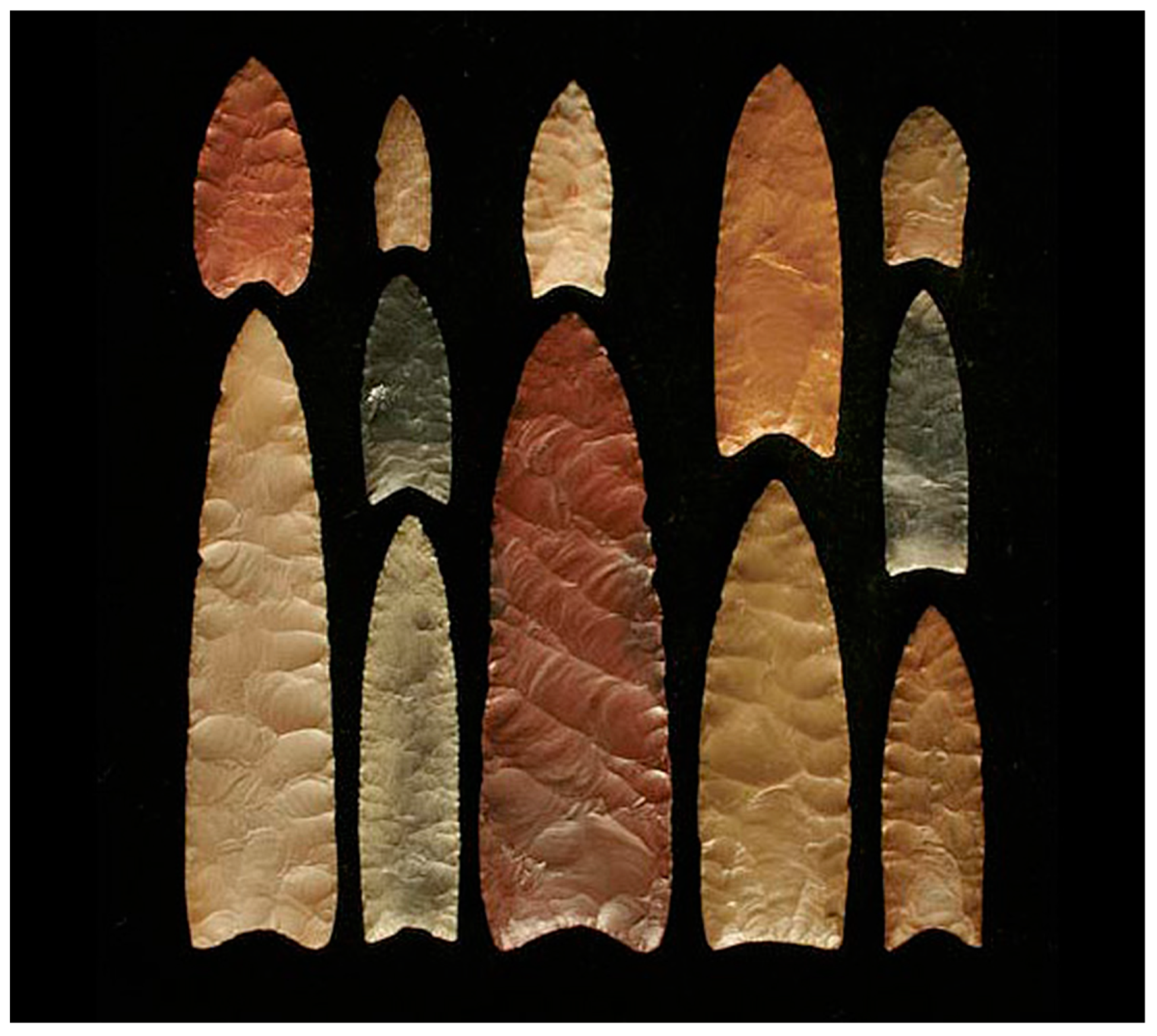
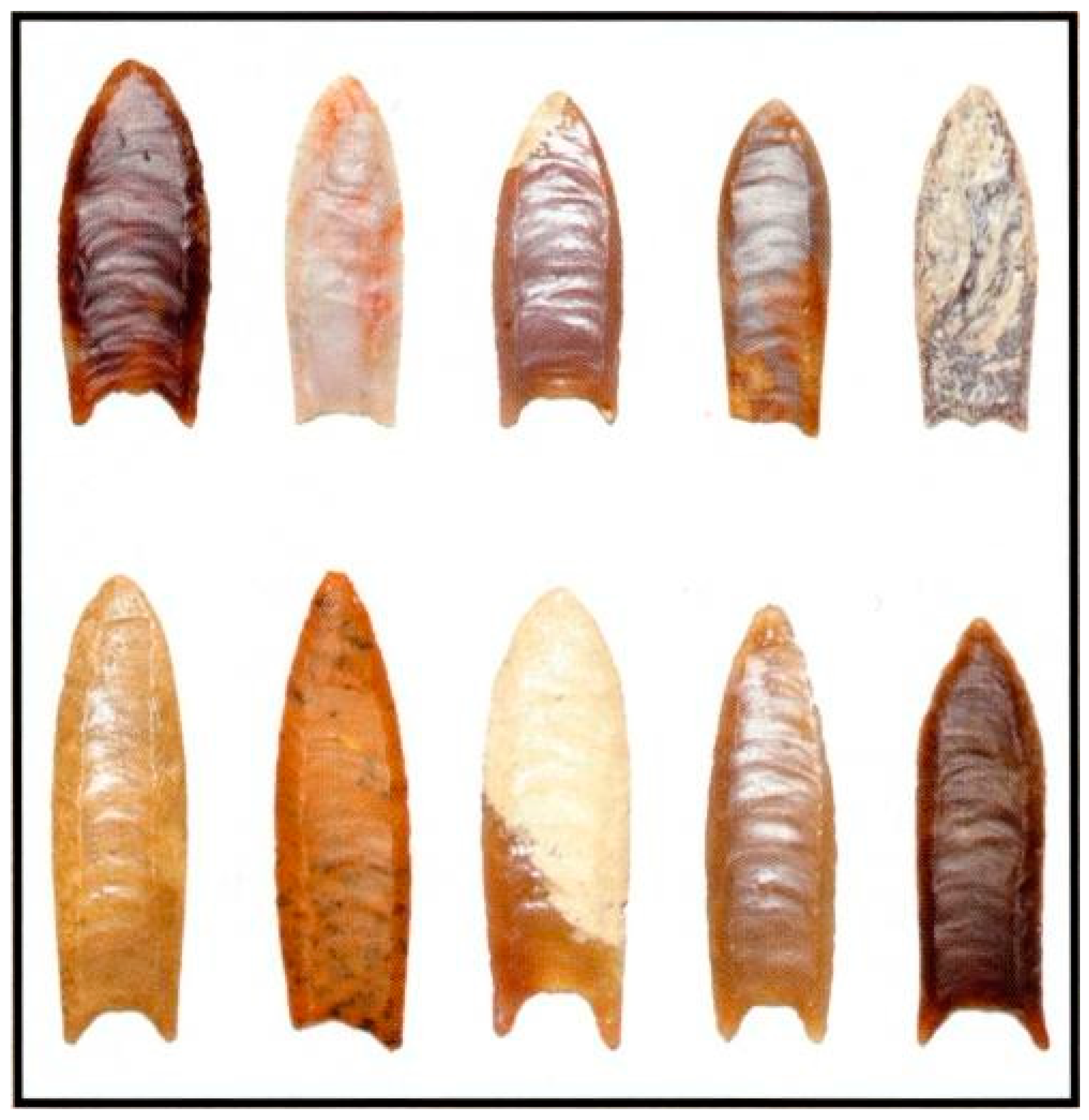
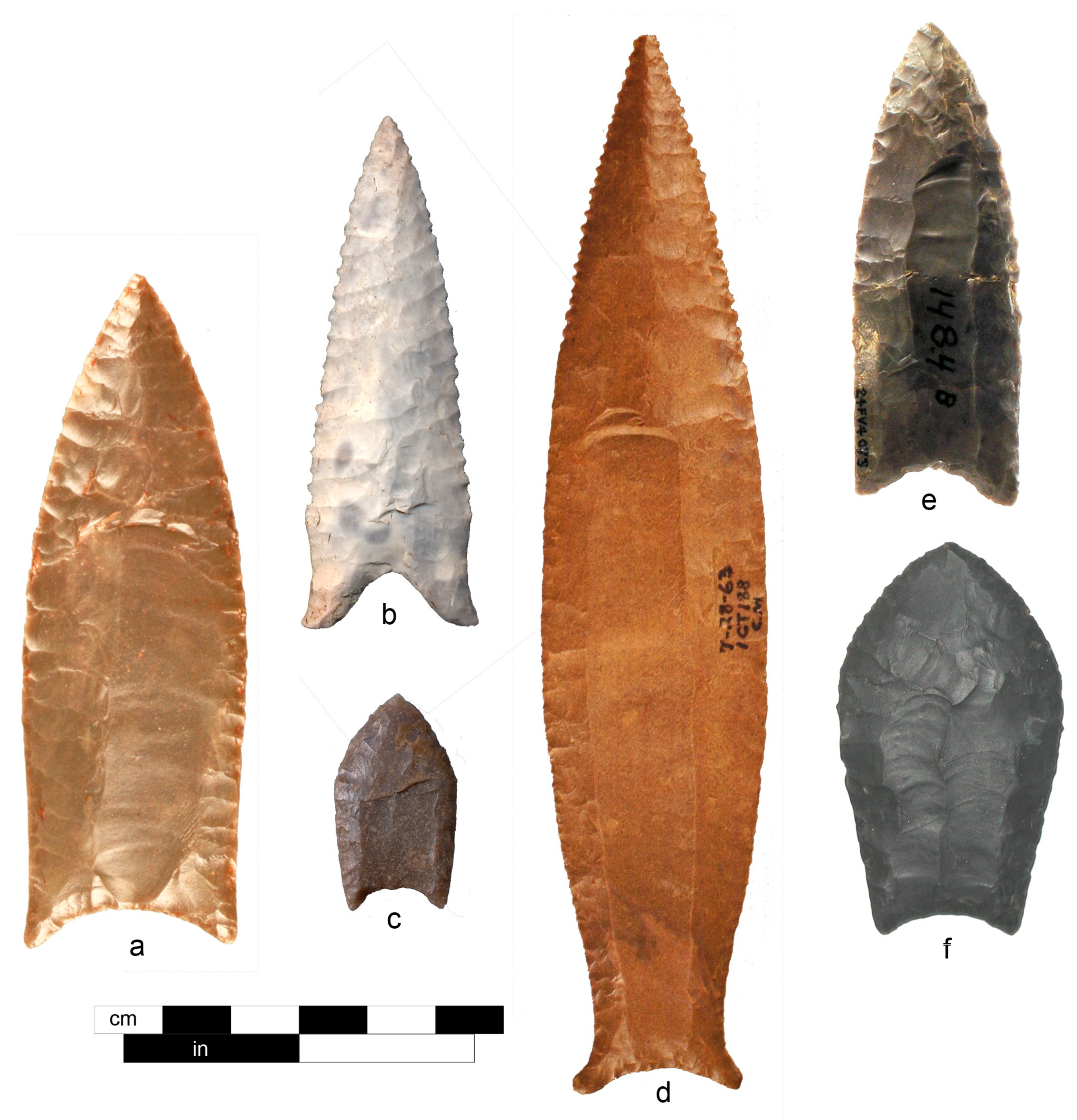
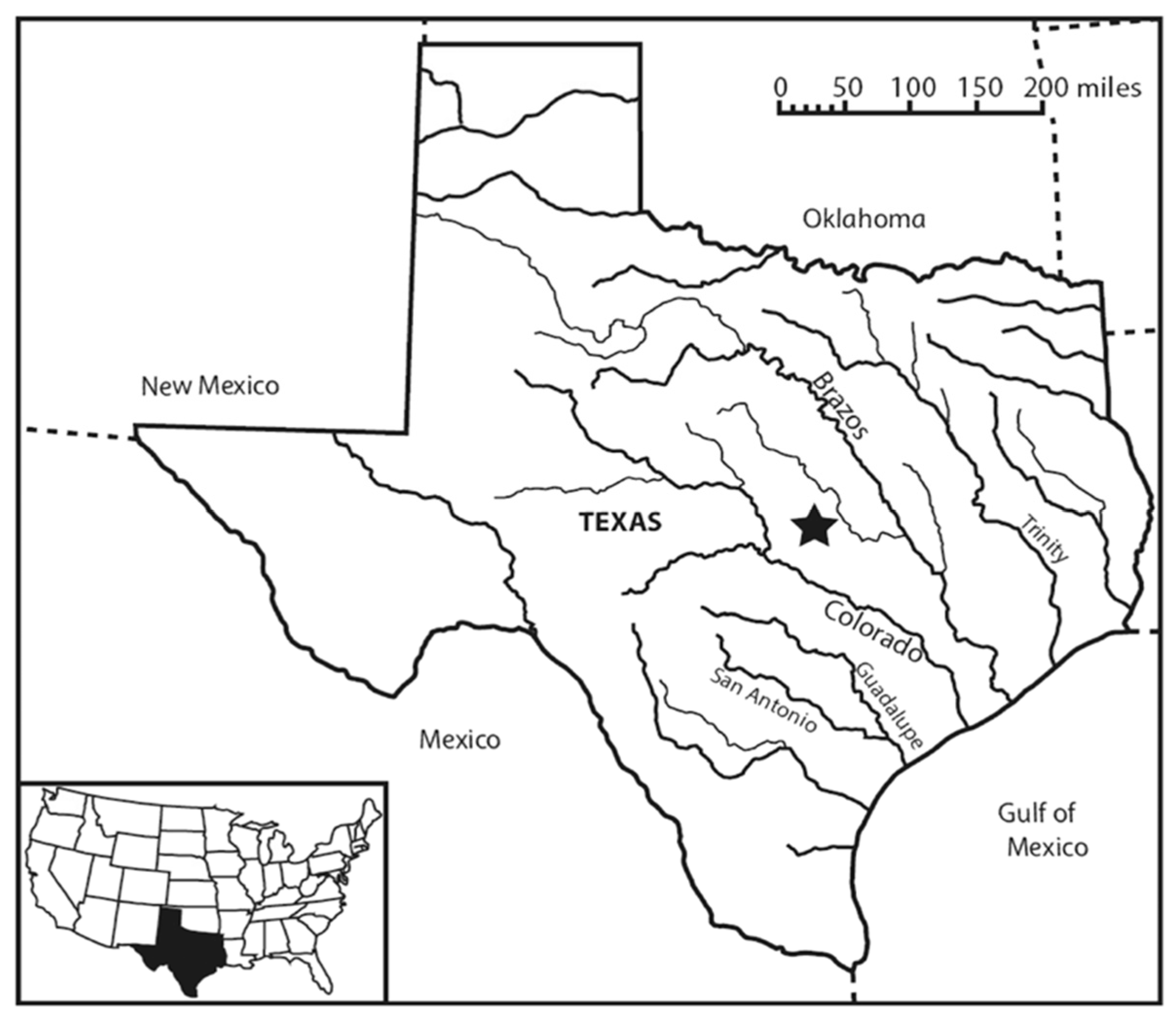
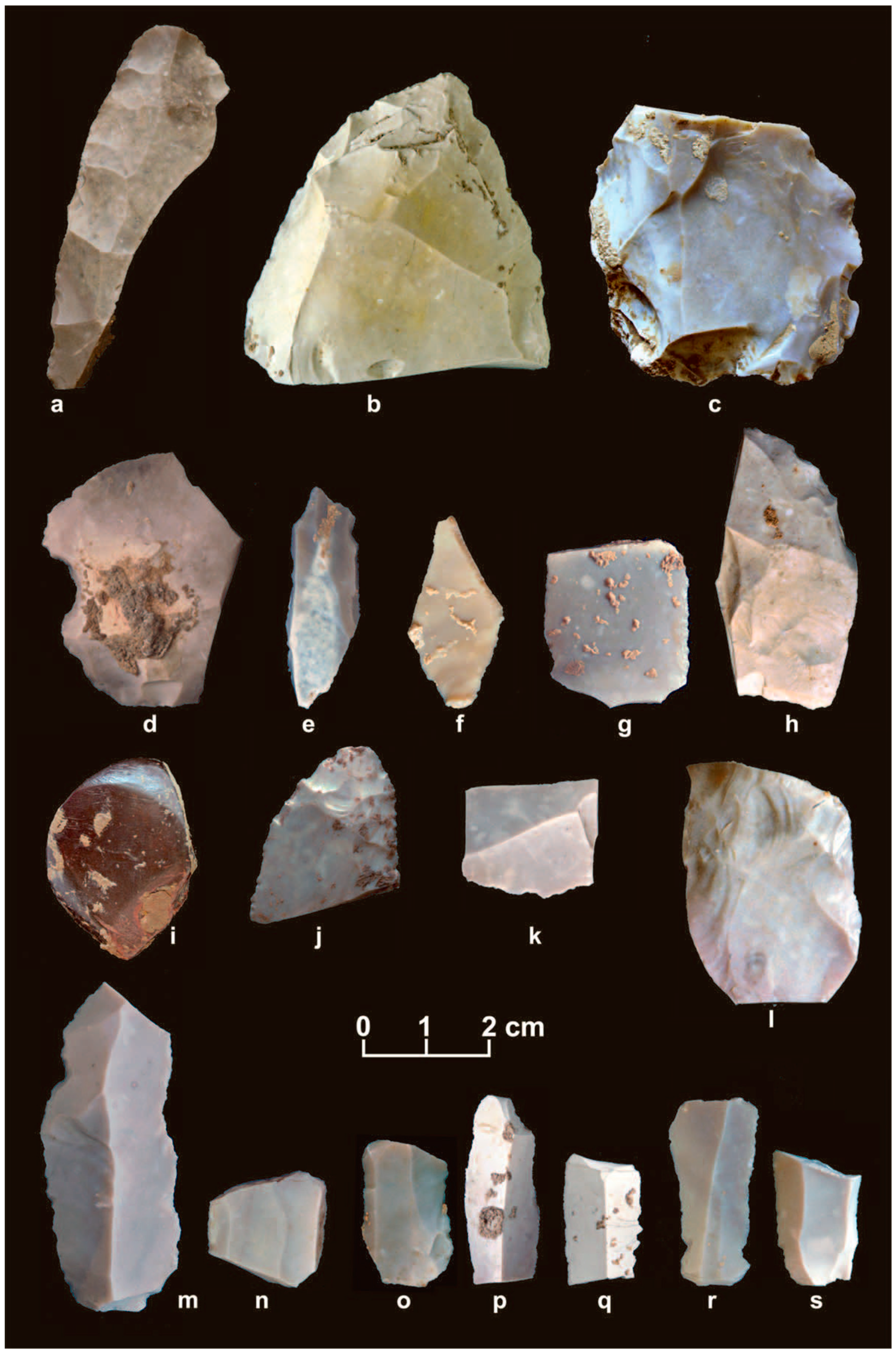
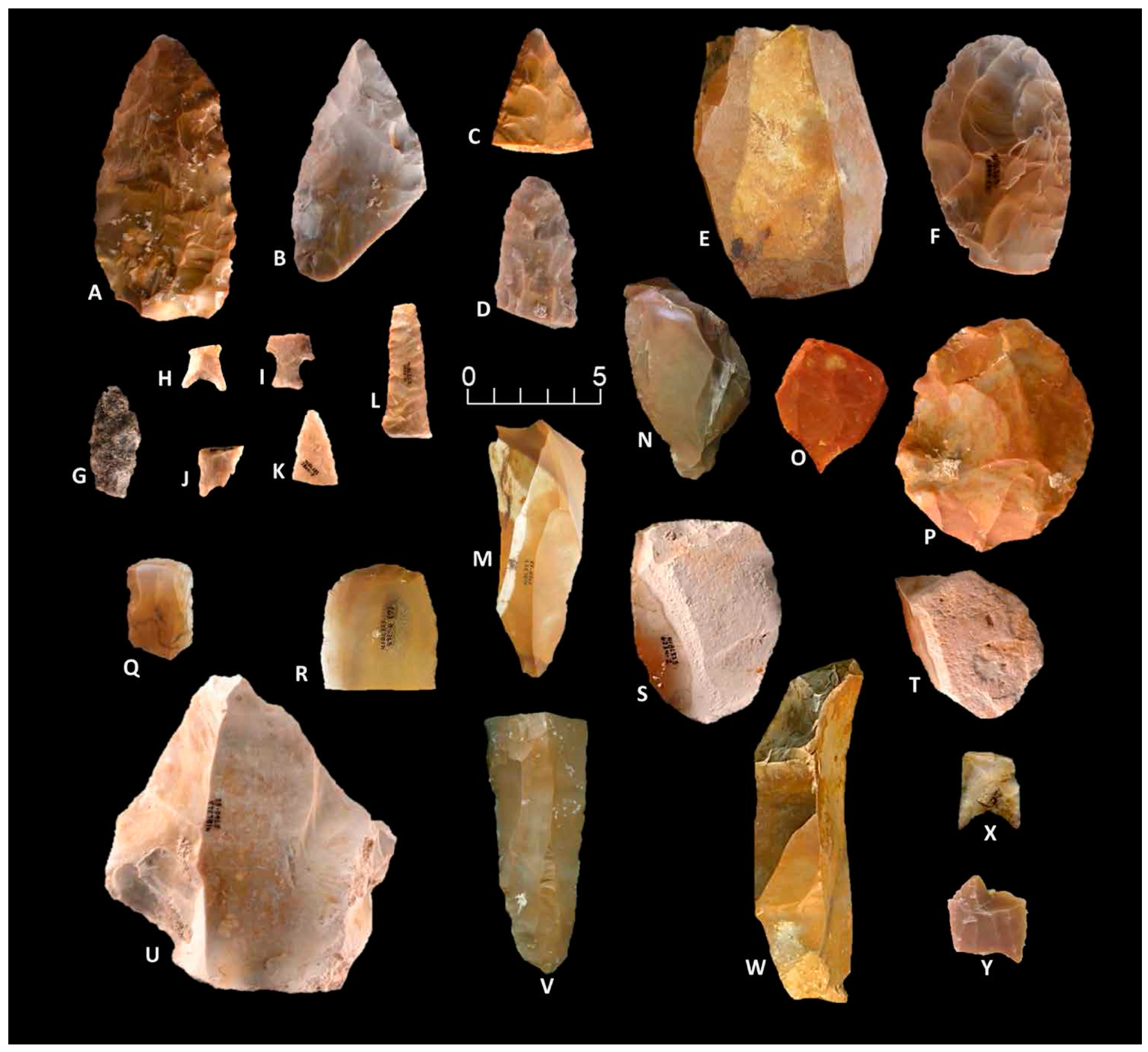
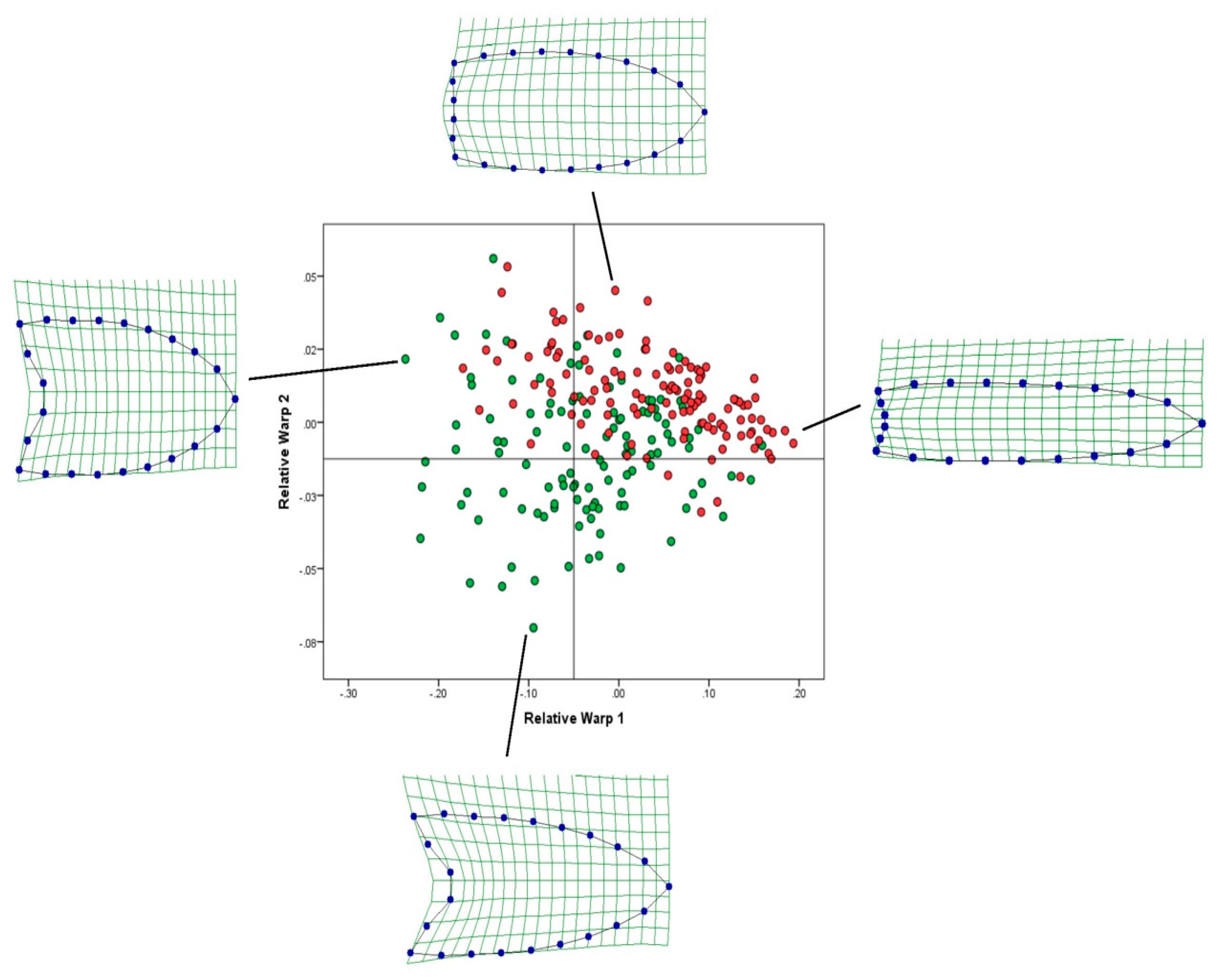
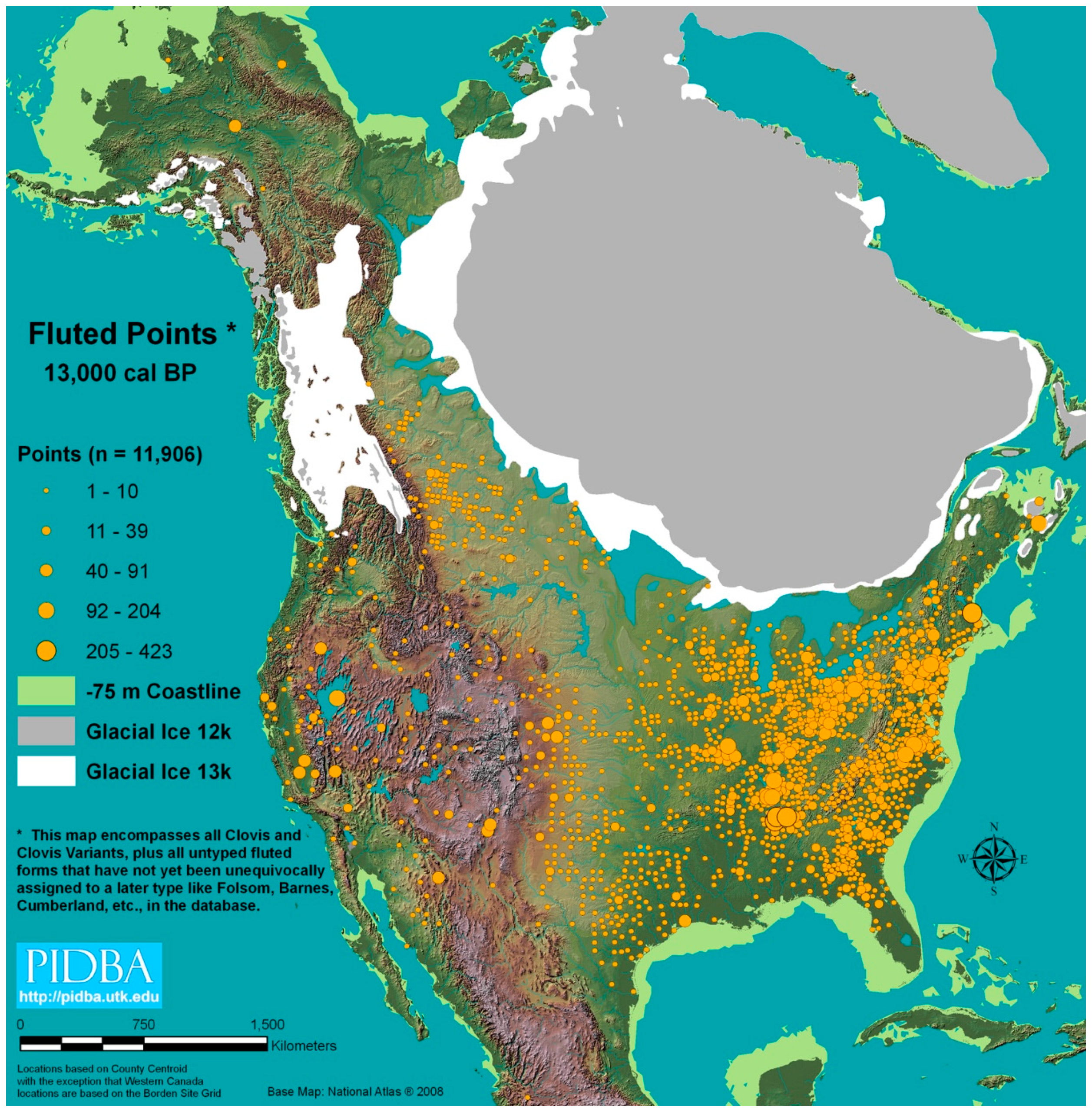
© 2018 by the author. Licensee MDPI, Basel, Switzerland. This article is an open access article distributed under the terms and conditions of the Creative Commons Attribution (CC BY) license (http://creativecommons.org/licenses/by/4.0/).
Share and Cite
O’Brien, M.J. Setting the Stage: The Late Pleistocene Colonization of North America. Quaternary 2019, 2, 1. https://doi.org/10.3390/quat2010001
O’Brien MJ. Setting the Stage: The Late Pleistocene Colonization of North America. Quaternary. 2019; 2(1):1. https://doi.org/10.3390/quat2010001
Chicago/Turabian StyleO’Brien, Michael J. 2019. "Setting the Stage: The Late Pleistocene Colonization of North America" Quaternary 2, no. 1: 1. https://doi.org/10.3390/quat2010001
APA StyleO’Brien, M. J. (2019). Setting the Stage: The Late Pleistocene Colonization of North America. Quaternary, 2(1), 1. https://doi.org/10.3390/quat2010001




